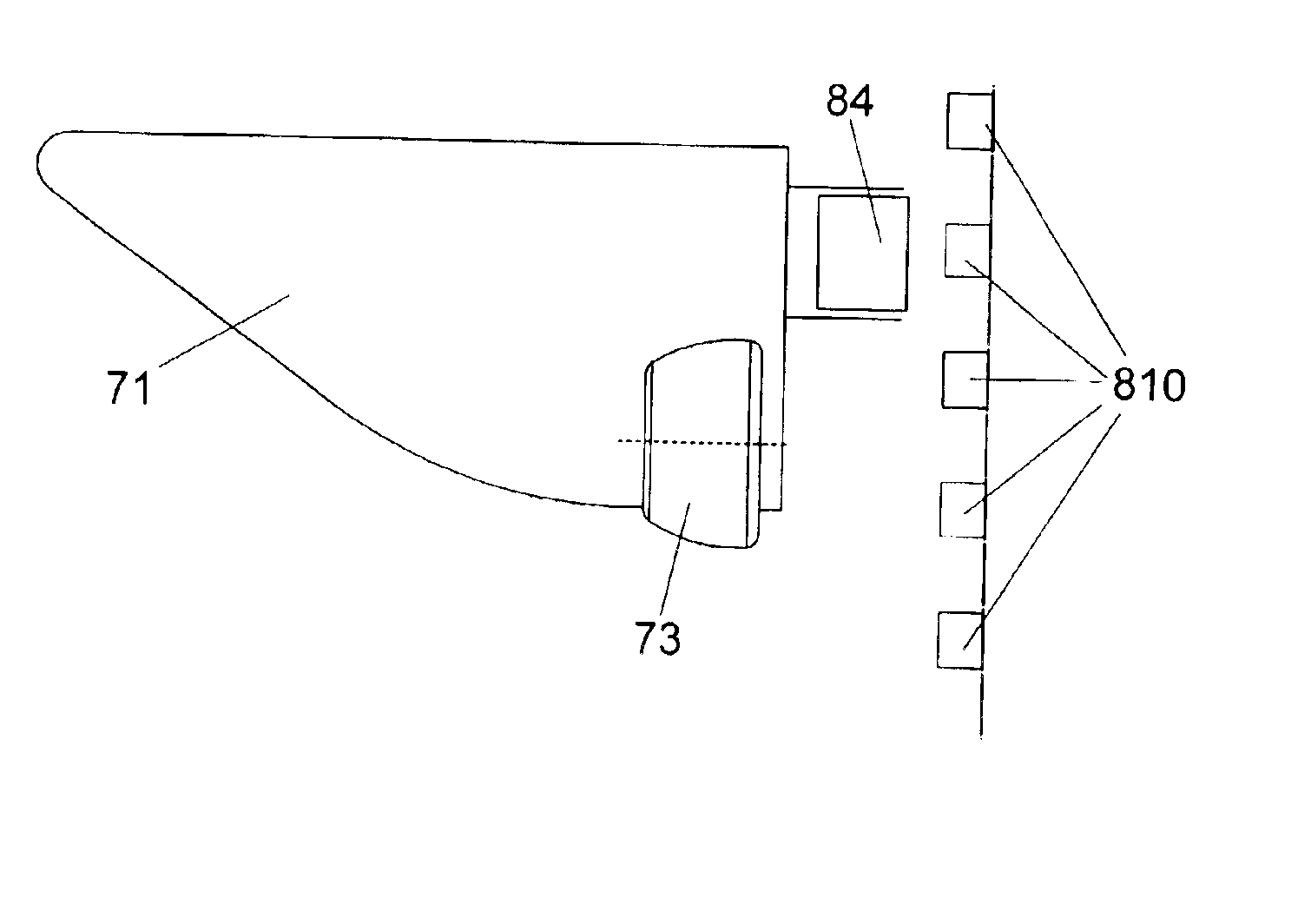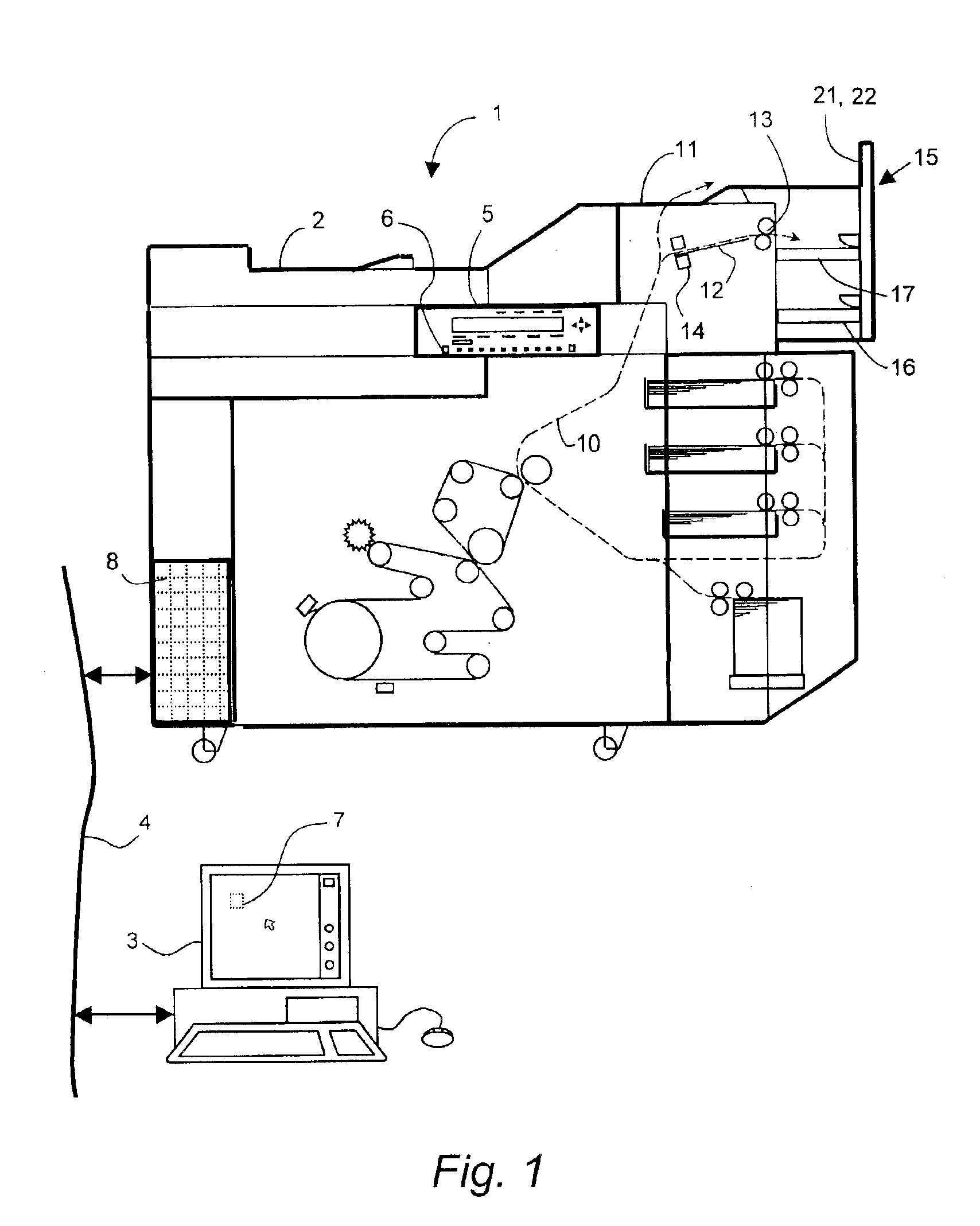Position detector
a detector and position technology, applied in the direction of instruments, transportation and packaging, using electrical/magnetic means, etc., can solve the problems of high cost, on/off behaviour, and unsuitable arrangement for continuous tray position determination
- Summary
- Abstract
- Description
- Claims
- Application Information
AI Technical Summary
Benefits of technology
Problems solved by technology
Method used
Image
Examples
Embodiment Construction
[0030]In the present invention, expediently, the sheet depositing device is located at the output of a paper processing machine. The sheet depositing device of the present invention will hereafter be illustrated with a paper processing machine in the form of a printing apparatus. It is evident that the sheet depositing device could be operated together with any other type of paper processing apparatus, such as copiers, imaging devices, etc.
[0031]The printing apparatus 1 shown in FIG. 1 according to an embodiment of the present invention comprises means known for printing an image on a receiving sheet. These images for printing may be present on original documents which are fed to a scanning station 2 situated at the top of the printing apparatus 1. Images for printing can also be fed in digital form from a workstation 3 connected via a network 4 to a control device 8 of the printing apparatus 1. A printing cycle for copying an original set fed via the scanning station 2 is started b...
PUM
 Login to View More
Login to View More Abstract
Description
Claims
Application Information
 Login to View More
Login to View More - R&D
- Intellectual Property
- Life Sciences
- Materials
- Tech Scout
- Unparalleled Data Quality
- Higher Quality Content
- 60% Fewer Hallucinations
Browse by: Latest US Patents, China's latest patents, Technical Efficacy Thesaurus, Application Domain, Technology Topic, Popular Technical Reports.
© 2025 PatSnap. All rights reserved.Legal|Privacy policy|Modern Slavery Act Transparency Statement|Sitemap|About US| Contact US: help@patsnap.com



